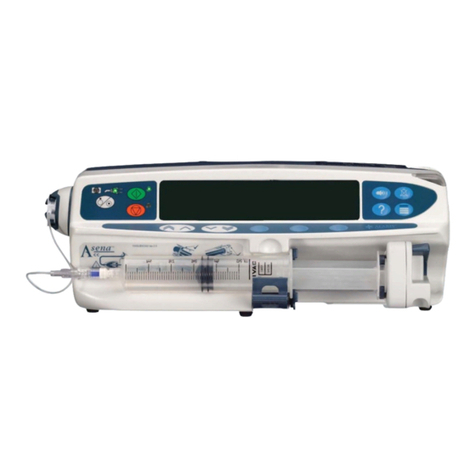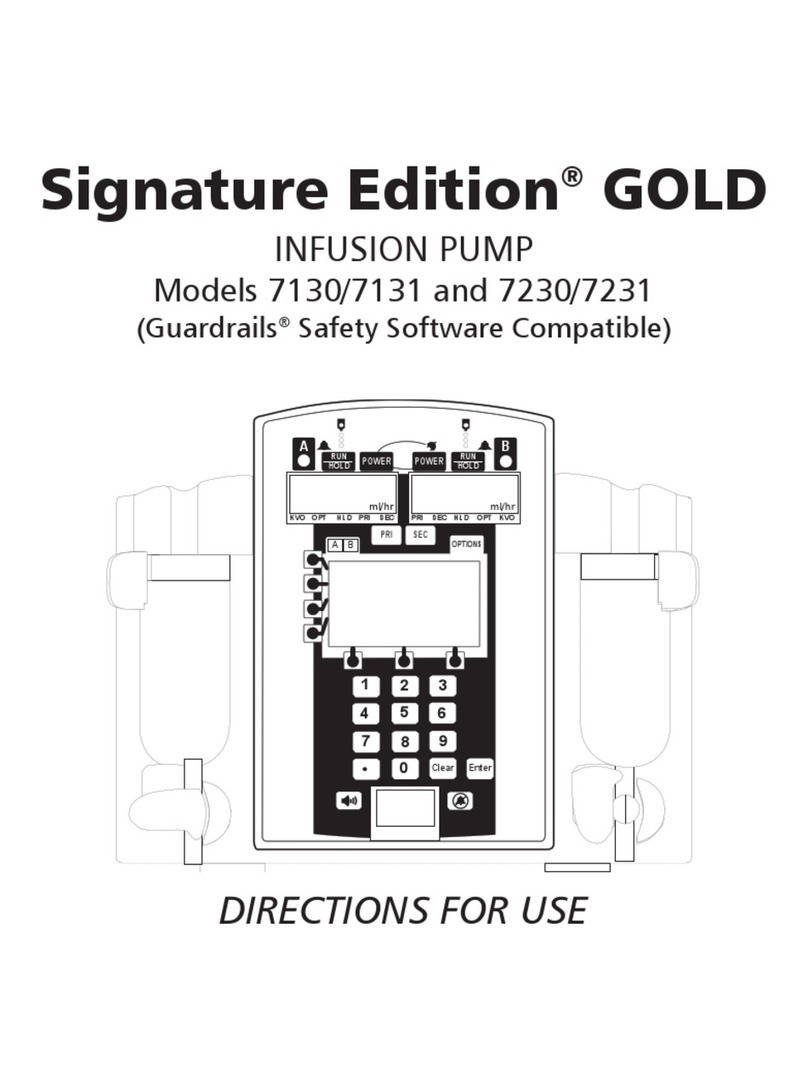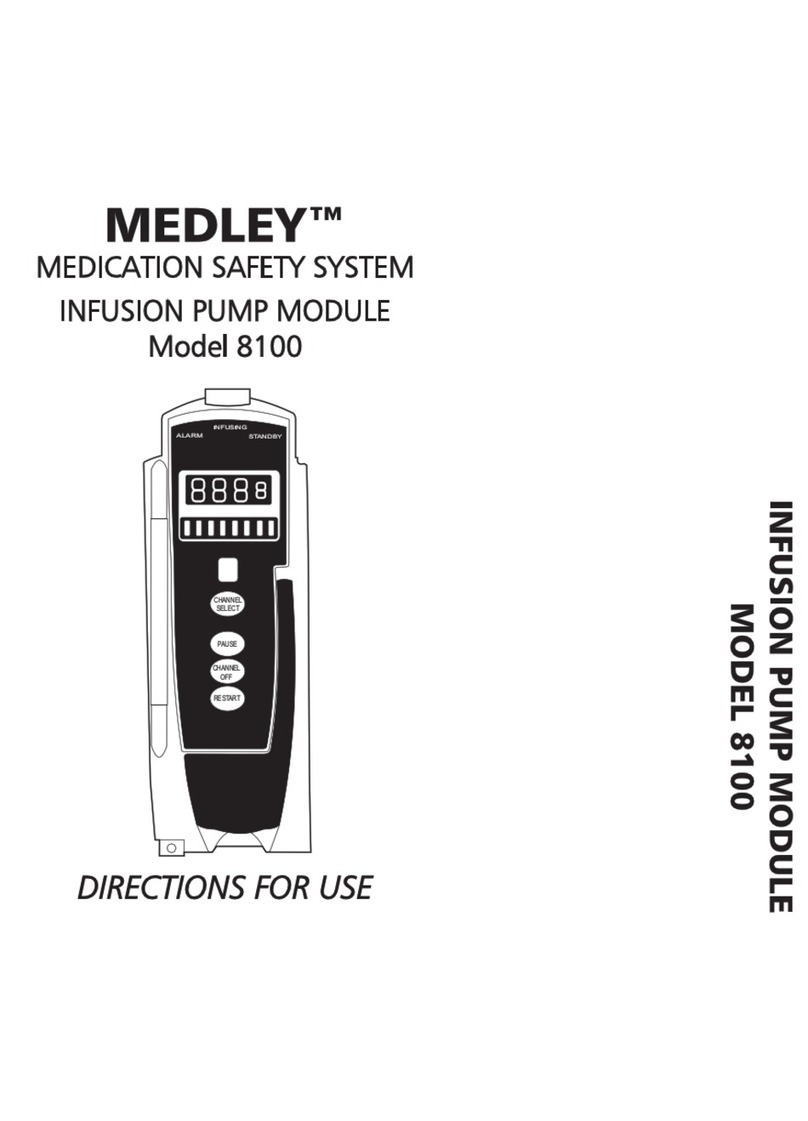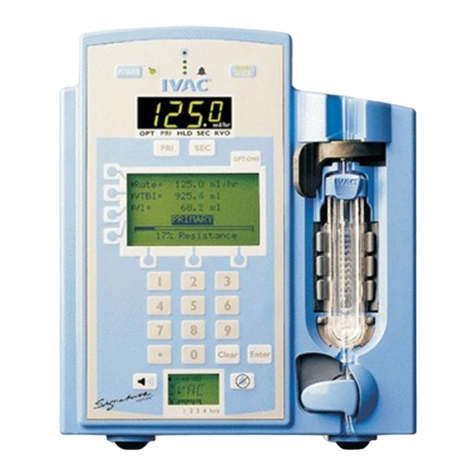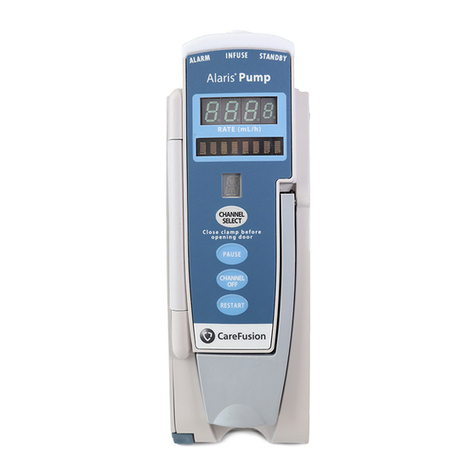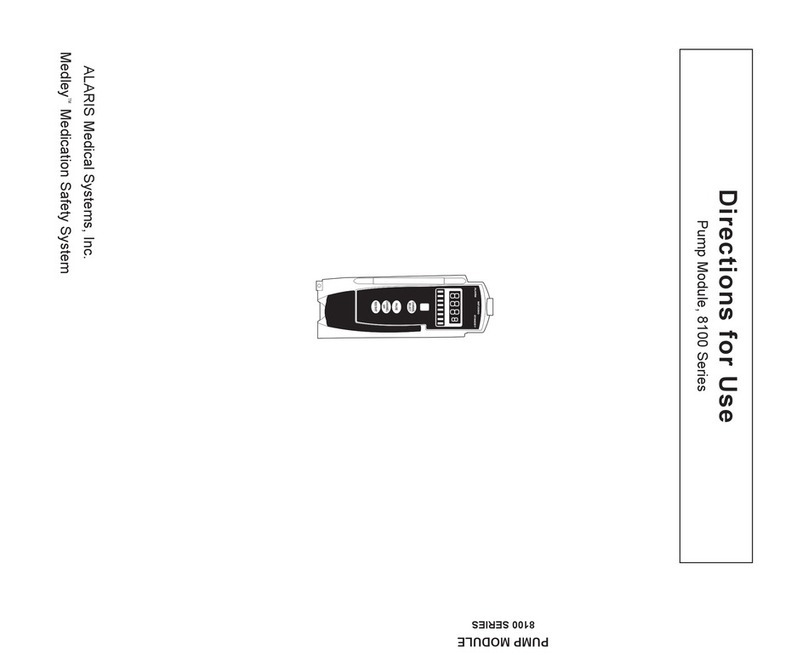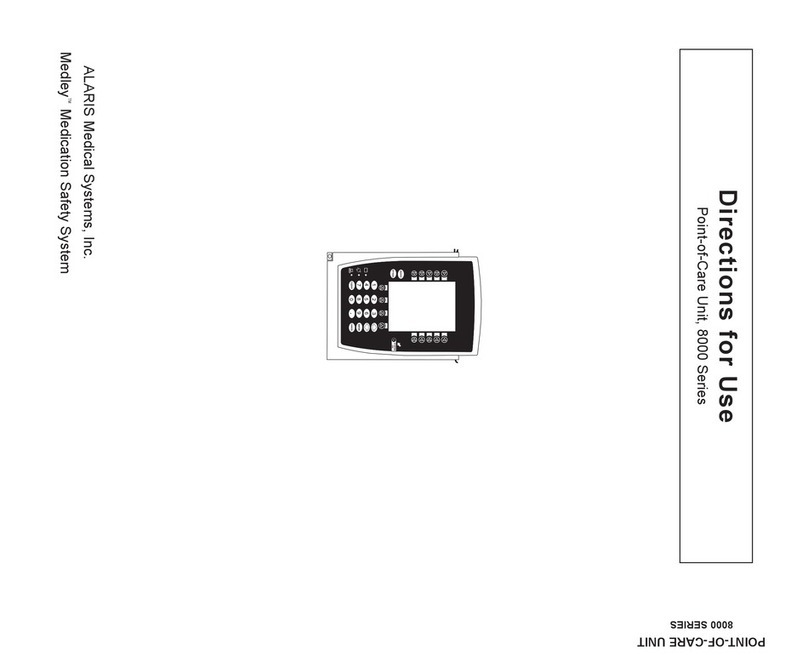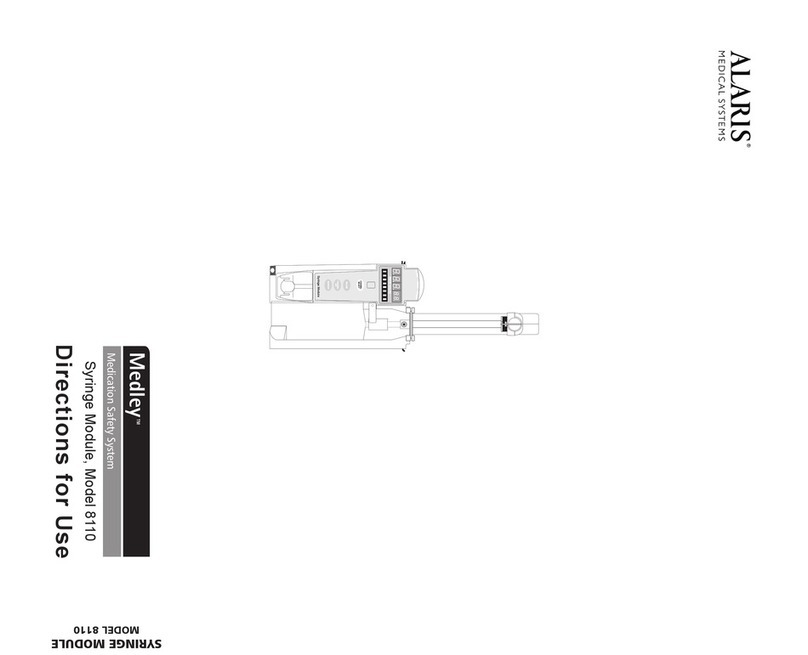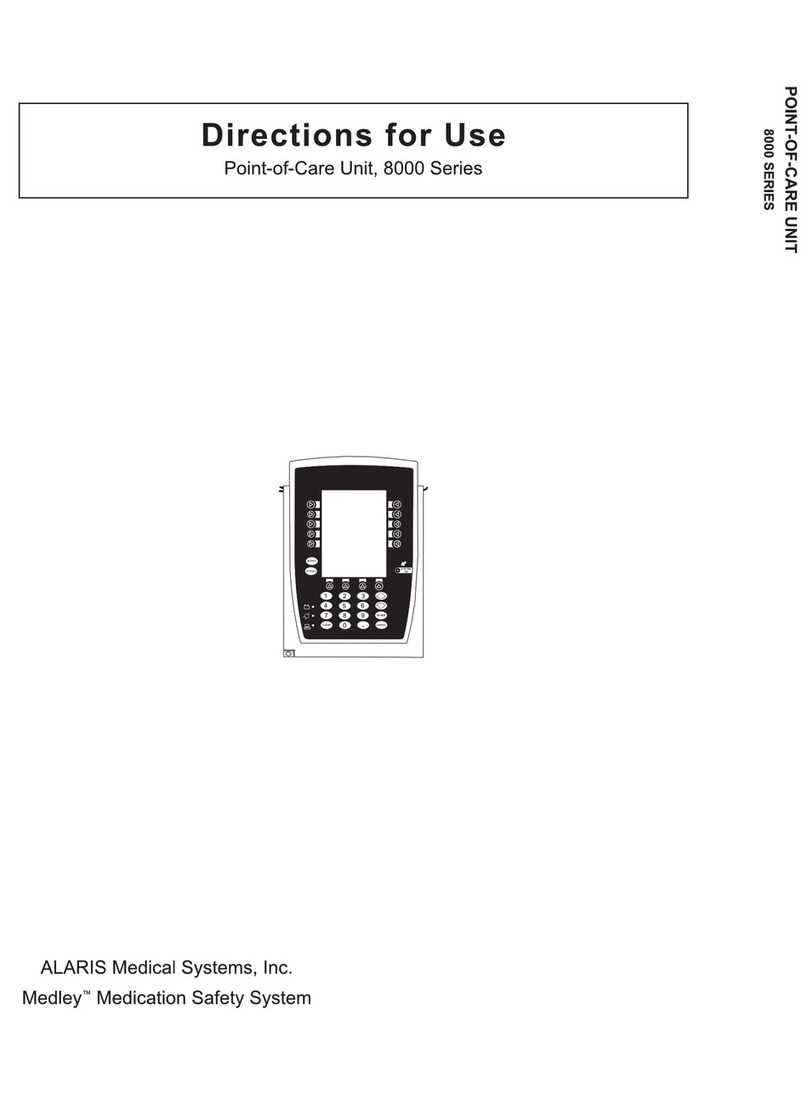
INTRODUCTION 3
INTRODUCTION
Ease of Use Features To enhance safety and ease of operation, the MEDLEY™ Medication System
provides a full range of audio and visual alarms, advisories and prompts.
Fast SAT When Fast SAT is enabled and there is one data point that is significantly
different from a previous data point, averaging is disregarded and the most
recent data point is displayed. For example, if the readings were 97%, 96%,
95% and 85%, the saturation level displayed would be 85%.
Guardrails®The Guardrails®Safety System is designed to help reduce programming
Safety Software errors by:
• Customizing device configurable settings to meet the need of the
selected hospital area/patient type (Profile).
• Comparing user programming with hospital-defined best practice
guidelines.
• Providing a Guardrails®Advisory prompt if an out–of–limits entry is
made.
Masimo®Sensors Disposable and reusable sensors are available for neonatal, pediatric and
adult patients.
PI Perfusion Index (PI) is a scaled numeric value derived from the magnitude of
the pulsations displayed on the plethysmographic (pleth) waveform. It is
calculated as a percentage of pulsatile signal to nonpulsatile signal. The PI
is used to find the best perfused site for sensor placement (the larger the PI,
the stronger the perfusion). The operating range is 0.02 to 20.0. The
desired number is >1.00 or as large as possible.
Pre-Silence Alarms can be pre-silenced for 120 seconds. The pre-silence alarm can be
cancelled before 120 seconds are complete.
Profiles Feature A profiles feature a unique set of device options configured to optimize
device function for a specific hospital area or patient type. A profile is
comprised of a Configuration, with device settings and defaults customized
by the user to best meet the needs of the profile area/patient type.
Sensitivity Mode The sensitivity mode, normal or maximum, of the current monitoring
configuration is displayed in the options mode. The normal setting is used
for normal patient monitoring purposes. The maximum setting is used for
improved low perfusion performance.
SET®Signal Extraction Technology®(SET®) uses adaptive filters to separate the
arterial signal from the nonarterial noise. SET®provides for accurate
readings under extreme conditions; such as, low perfusion and motion.
Signal I.Q.™ The Signal I.Q.™ is a visual indication of the pulsation at the sensor site.
The height of the vertical bar indicates the quality of the measured signal.
The Signal I.Q.™ is related to proper sensor application, adequate arterial
signal and intensity of motion. Use the Signal I.Q.™ to verify optimal sensor
placement.
Features




















